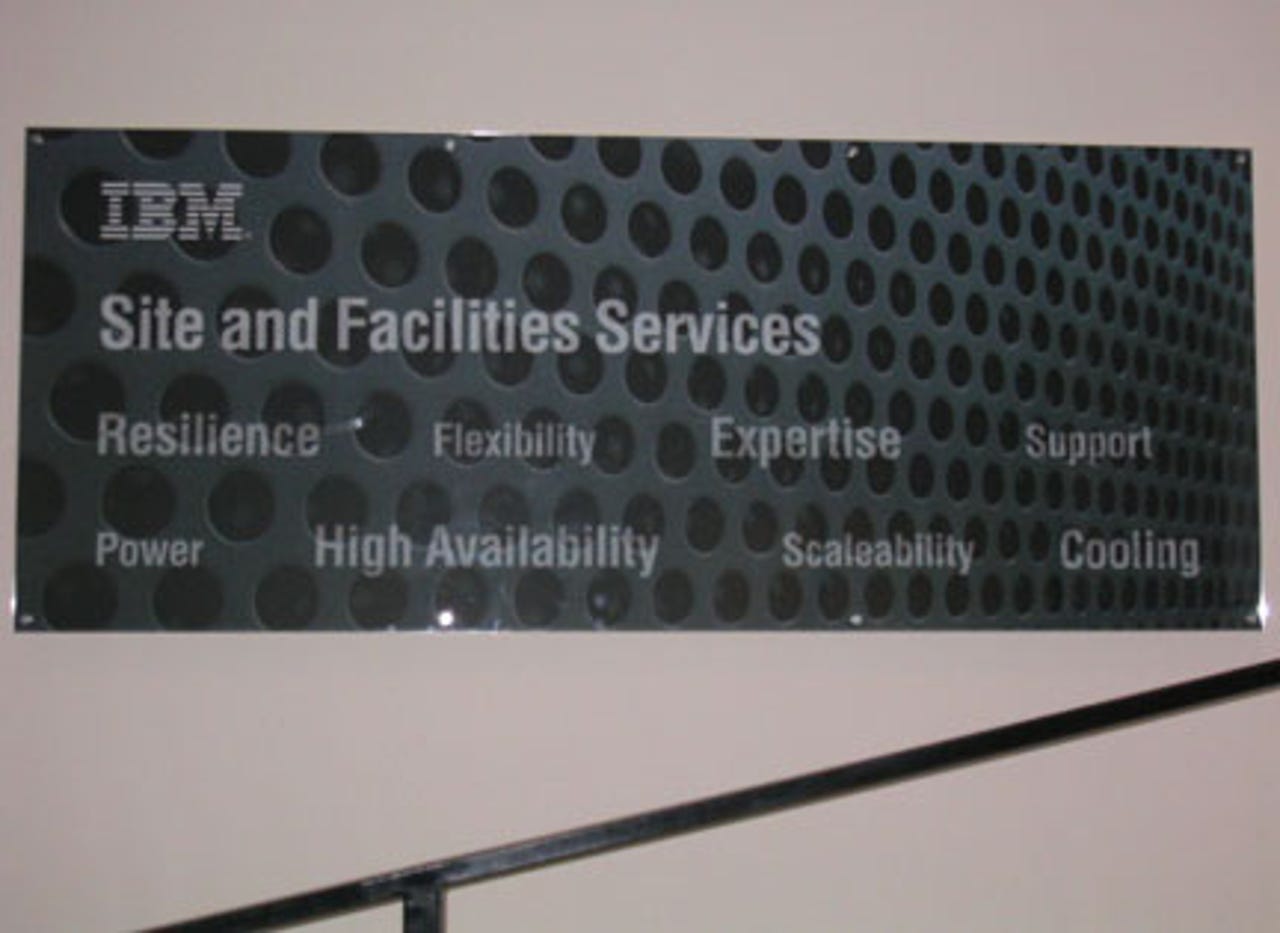Photos: Big Blue shows its green side


IBM has set up a state-of-the-art data centre at its London headquarters on the South Bank. The company is using the facility to show off its expertise in data-centre computing, focusing on the two hot issues of the day: power saving and "green computing".
On paper at least, the company has come up with some answers to the question of how to minimise the harmful excess emissions generated by servers. A walk round the South Bank facility reveals some of the secrets of how to make this work. IBM claims it has invested millions in technologies that can, for example, cut electricity costs by 20 to 30 percent or more.
IBM is using the "room within a room within a room" method for controlling the environment of the data centre. It is becoming a fashionable method and helps to control the environment around the computer facility.
The entire data centre is a room which is sealed from the outside world and has a glass roof. This is the anteroom where the data storage and other facilities not dedicated to data processing are housed. In this room, the atmosphere is fully air-conditioned to an ambient temperature.
All of the cabling is kept within the body of the data centre; nothing is left running under the floor. It is more than just cosmetic. Leaving the floor clear allows the air from the air conditioners to flow freely, which results in greater efficiency and less power being needed. IBM says some companies have cut their electricity bills by 20 percent or more, just through some simple cleaning.
From the outer room, the data centre itself, where the main processing takes place, can only be viewed through the smoked glass in this door. The door is air sealed and is quite tough to open against the pressure between the two rooms.
The inner room is the cold room and all the air conditioning is angled towards keeping the inner room as cold as possible. The excess heat from the servers is dissipated first to the outer room and then to the outside environment. The aim of using an inner room for the main cooling area is to minimise the area that the air conditioners have to work to cool down.
Look inside the data processing room at IBM South Bank and two things become apparent. Firstly, it is very, very cold. Really cold — even for a data centre. The coolness is due to the use of IBM's own patented Stored Cooling Solution ("the ice-cube for your data centre"), which IBM claims will improve chiller efficiency by up to 50 percent.
Secondly, as shown in the photograph above, the blades in the IBM blade servers are stacked in a very dense configuration. Density equals heat but, rather than spread the heat to dissipate it, the IBM centre works by concentrating the problem so it can deal with it more effectively.
On one full-length rack (shown above) there are around 240 blades at a supercomputer level of density. Yet the room is very cold.
Meanwhile, the excess heat has been channelled out of the back of the servers to warm what parts of the surrounding environment may need warming.
Not just like any other data centre, the IBM facility at South Bank is compact and impressive. But does it do what it says on the tin? Does it save energy?
IBM is betting a lot that it does. The company's green initiative is geared to spend $1bn (£504m) a year around the world on energy-saving initiatives, as well as core research. The company has a stack of research to help IT managers work out how they can save energy and, more crucially, where to start on the problem. Usefully, the company has published a self-assessment system, which is based on work done by the Green Grid initiative, to work out your company's energy consumption.